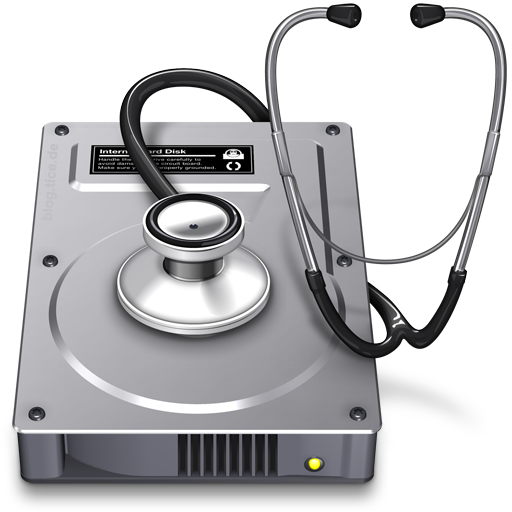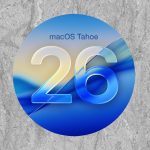The format of a hard drive is specific to an Operating System, however some formats allow you to use them cross platform.

Drive formatting is the process of preparing a storage device—like a hard drive, solid-state drive (SSD), USB flash drive, or memory card—for use by an operating system.
When you format a drive, you’re essentially setting up its structure so files can be stored, organized, and retrieved properly. Here are the key things that happen during formatting:
- File System Creation – A file system (like APFS, HFS+, NTFS, FAT32, or exFAT) is written to the drive. This determines how data is stored, how large files can be, and which devices can read the drive.
- Partition Setup – The drive is divided into sections (partitions). Each partition can be formatted with its own file system, making it possible to use one drive for multiple purposes.
- Data Erasure (to some extent) – Standard formatting removes pointers to existing files, making the drive appear empty. While data isn’t fully erased until it’s overwritten, most operating systems treat it as a fresh start. (A “full format” can overwrite or scan for bad sectors, which makes recovery harder.)
- Error Checking – Some formatting methods also check the drive for physical defects (bad sectors) and mark them so they won’t be used.
Once formatted, the drive is ready to store files, install applications, or even hold an operating system.
A file system is the method an operating system uses to organize, store, and manage data on a storage device like a hard drive, SSD, USB stick, or memory card.
Think of it like the library system in a city library:
- The books are your files.
- The shelves are folders (directories).
- The catalog system is the file system, keeping track of where everything is stored and how to find it.
🔑 What a File System Does:
- Organizes Data – It structures how files are named, stored, and arranged in folders.
- Manages Storage Space – Decides where each file is physically placed on the disk and how to reuse empty space.
- Tracks Metadata – Keeps information like file name, size, creation date, permissions, and ownership.
- Controls Access – Determines who can read, write, or execute a file (important for security).
- Handles Limits – Defines maximum file sizes, volume sizes, and other constraints.
📂 Examples of File Systems:
- Mac: APFS, HFS+
- Windows: NTFS, FAT32, exFAT
- Linux/Unix: ext4, XFS, Btrfs
🚦 Everyday Example:
When you plug in a USB drive:
- Without a file system → your computer just sees raw, unorganized storage (like a blank warehouse with no shelves).
- With a file system → it knows how to label, find, and retrieve files (like a well-organized warehouse with aisles, boxes, and labels).
👉 In short: A file system is the “rulebook” that tells your computer how to store and retrieve files from a drive.
TABLE OF CONTENTS
Table of Contents
What file systems do Macs use?
Macs have used several different file systems over the years, depending on the macOS version and the type of drive. Here’s a clear breakdown:
1. APFS (Apple File System) – Current Standard
- Introduced: macOS High Sierra (2017)
- Default for: SSDs and flash storage, now also used on newer hard drives.
- Features:
- Optimized for solid-state drives (fast cloning, snapshots, space sharing).
- Strong encryption support.
- Crash protection and more efficient storage management.
- Use today: All modern Macs (macOS 10.13 High Sierra and later) default to APFS.
2. HFS+ (Mac OS Extended) – Legacy Standard
- Introduced: 1998, used until 2017.
- Default for: Mechanical hard drives and older versions of macOS.
- Features:
- Journaling for data integrity (prevents corruption).
- Good for large files, but slower than APFS on SSDs.
- Use today: Still used on older Macs and for compatibility in some cases (e.g., external drives).
3. HFS (Hierarchical File System) – Obsolete
- Introduced: 1985, used up to Mac OS 8.1.
- Replaced by: HFS+ in 1998.
- Use today: Rare; only relevant for very old Macs or archival purposes.
4. MFS (Macintosh File System) – First File System
- Introduced: 1984 with the original Macintosh.
- Limitations: Could only handle one folder level (no nested folders).
- Use today: Completely obsolete.
What file systems do Windows machines use?
Windows machines, like Macs, have gone through several file systems over the years. Here’s a breakdown:
1. NTFS (New Technology File System) – Current Standard
- Introduced: Windows NT (1993), default since Windows XP (2001).
- Features:
- Supports very large files and partitions.
- File permissions and encryption (security features).
- Journaling (protects against corruption).
- Compression and disk quotas.
- Use today: Default file system for all modern Windows PCs (Windows 10, 11, Server editions).
2. FAT32 (File Allocation Table 32) – Legacy Standard
- Introduced: Windows 95 OSR2 (1996).
- Features:
- Maximum file size: 4 GB.
- Maximum volume size: 2 TB (though Windows’ built-in formatting tool only supports up to 32 GB).
- Widely supported by many devices (cameras, game consoles, Macs, Linux).
- Use today: Still used for USB flash drives and external drives when cross-platform compatibility is needed.
3. exFAT (Extended File Allocation Table) – Cross-Platform Standard
- Introduced: 2006, optimized for flash drives and memory cards.
- Features:
- Supports very large files (no 4GB limit like FAT32).
- Lightweight, without the overhead of NTFS.
- Supported by both Windows and macOS (ideal for external drives).
- Use today: Common on USB sticks, SD cards, and external drives used across different OSes.
4. FAT16 and FAT12 – Very Old Systems
- FAT16: Used in DOS, Windows 3.x, and early Windows 95. Limited to 2 GB partitions.
- FAT12: Used in floppy disks. Maximum size just 32 MB.
- Use today: Practically obsolete except in embedded systems or very old storage media.
5. ReFS (Resilient File System) – Advanced but Limited
- Introduced: Windows Server 2012.
- Features:
- Better data integrity and resilience against corruption.
- Designed for servers, large-scale storage, and virtualization.
- Limitations: Not available in most consumer editions of Windows; limited to enterprise/server use.
What are the key differences in file systems?
🖥️ Mac vs Windows File Systems
| Feature | Mac (Apple) | Windows (Microsoft) | Cross-Platform Notes |
|---|---|---|---|
| Current Default | APFS (Apple File System) | NTFS (New Technology File System) | Not natively compatible with each other. |
| Legacy Standard | HFS+ (Mac OS Extended, 1998–2017) | FAT32 (Windows 95–XP, still supported) | Both can read/write FAT32 easily. |
| Older/Obsolete | HFS (1985–1998), MFS (1984) | FAT16, FAT12 (DOS, early Windows) | Used only for archival/very old media. |
| Large File Support | APFS: practically unlimited | NTFS: practically unlimited | exFAT allows huge files, FAT32 limited to 4 GB max per file. |
| Security | APFS: strong encryption, snapshots, cloning | NTFS: permissions, encryption (EFS), journaling | FAT32/exFAT have no built-in security. |
| Performance | APFS optimized for SSDs, efficient space sharing | NTFS robust for HDDs & SSDs, good with large volumes | exFAT works well on flash drives, SD cards. |
| Cross-Platform Best Choice | exFAT (full read/write support on Mac + Windows) | exFAT | exFAT is the go-to for USB drives, external SSDs, and SDXC cards. |
| Server/Enterprise Use | Rare; Macs don’t have a dedicated server FS (APFS used) | ReFS (Resilient File System, Windows Server) | Not intended for cross-platform. |
🔑 Quick Takeaways:
- Mac default: APFS (modern) / HFS+ (older).
- Windows default: NTFS (modern) / FAT32 (older).
- Best cross-platform: exFAT (handles huge files, no 4GB limit like FAT32).
- Still around for compatibility: FAT32 (universally supported, but limited).
Can Macs use Windows files systems?
Yes — but with some important limitations depending on the file system:
✅ File systems Macs can use:
- FAT32
- Read/Write: Full support on macOS.
- Use case: Great for USB sticks and external drives that need to work with everything (Macs, Windows, Linux, cameras, game consoles).
- Limitation: Maximum file size is 4 GB, max partition size 2 TB.
- exFAT
- Read/Write: Full support on macOS (since OS X Snow Leopard 10.6.5).
- Use case: Best for external drives shared between macOS and Windows. Handles very large files (over 4 GB).
- Limitation: No built-in journaling or advanced features like encryption.
- NTFS
- Read: macOS can read NTFS-formatted drives natively.
- Write: Not supported by default. macOS can’t write (save, delete, edit files) without extra software.
- Workarounds:
- Third-party drivers like Paragon NTFS for Mac or Tuxera NTFS for Mac add full read/write support.
- Some command-line hacks exist, but they’re not reliable.
🚫 Not directly usable on Mac:
- ReFS (Resilient File System) → Windows Server only; no macOS support.
- Older FAT variants (FAT16, FAT12) → macOS may read some, but they’re practically obsolete.
How do I get my drives properly formatted?
Denver Mac Repair can help take the guesswork out of choosing the right format for your hard drive or external storage, ensuring it matches your needs whether you’re working exclusively on a Mac, sharing files with Windows, or setting up drives for special uses like media production or backups. Our technicians can convert drives to alternative file systems such as APFS, Mac OS Extended, exFAT, or FAT32, depending on the situation, and we take care to preserve your data during the process. Whether you need compatibility across platforms, maximum performance on modern Macs, or a legacy setup for older devices, Denver Mac Repair has the tools and expertise to format and configure your drives the right way the first time.











